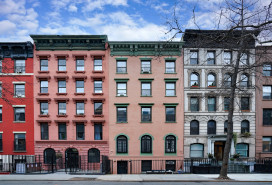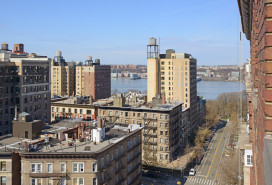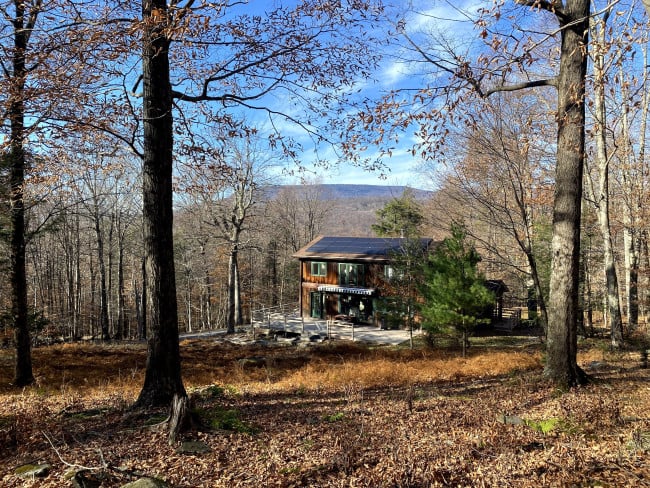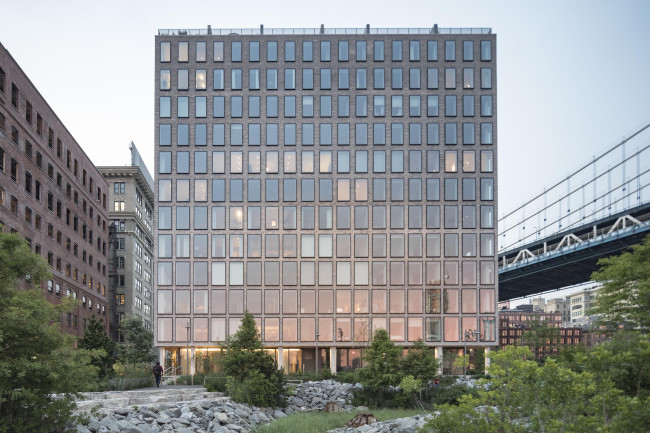A massive geothermal rental project is coming to the Brooklyn waterfront
- The 700,000-square-foot development at 1 Java Street will have 834 rentals across five buildings
- The water-source heat-pump system will reduce carbon emissions by 53 percent
- NYSERDA awarded the project a $4 million grant under its heat-pump pilot program
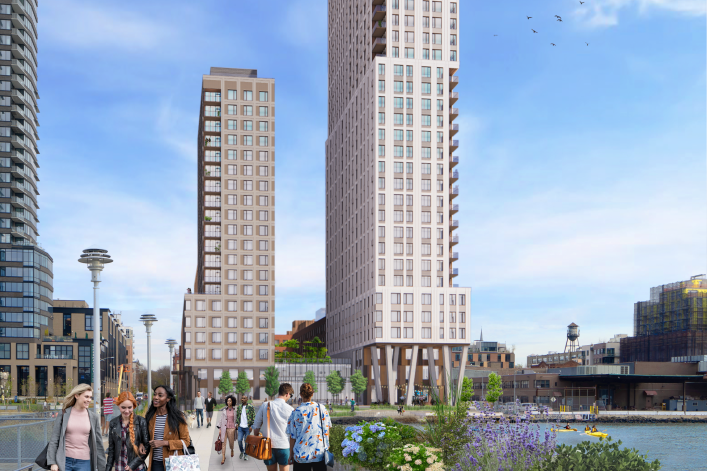
Slated to open in 2025, 1 Java Street takes up an entire city block and will include an esplanade on the Greenpoint-Williamsburg waterfront.
Courtesy of Lendlease
Ever wonder what living in a net-zero—emission free—New York City building could be like? The announcement of a brand-new development in Brooklyn that harnesses clean, renewable energy from the earth provides one answer—and it's a doozy.
Taking up a full city block along the Greenpoint-Williamsburg waterfront, 1 Java Street—expected to be completed in 2025—is the largest multifamily project in New York State (if not the country) to use a geothermal heat exchange system, according to New York State Energy Research and Development Authority (NYSERDA), which just awarded the project a $4 million grant under its heat-pump pilot program.
The 700,000-square-foot project will have 834 rental units across five buildings ranging from two 37-story and 20-story towers on the waterfront side to low-rise buildings in the historic district. It also includes 13,000 square feet of retail space and an 18,000-square-foot waterfront esplanade.
Two Australia-based businesses—Lendlease, a global real estate and investment management group, and Aware Super, a superannuation investment fund (aka Australian pension fund)—are behind the groundbreaking project, designed to further efforts to meet or exceed Local Law 97's carbon emission caps by 2024.
The development also aligns with Lendlease's own Mission Zero goals of being net zero by 2025 and "absolute zero carbon" by 2040. Scott Walsh, development project director for Lendlease Development (headquartered in NYC), says this sustainability initiative is "the foundational principle that brought the team together to study how we could deliver a building in a cold climate that can be efficiently powered without fossil fuels."
It's not the first geothermal project in NYC—or even the 81st (the number of registered projects by the state Department of Environmental Conservation). But most of those, including the Brooklyn Children’s Museum and Bronx Zoo’s Lion House, only use geothermal energy on a small scale.
It's not the first large-scale residential development, either. That claim goes to 1515 Surf Ave. in Coney Island, a 470,000-square-foot residential complex slated to open in 2024 with 461 rental units in two towers and 11,000 square feet of ground-floor retail space.
But based on square footage, building height, number of units, and number of boreholes (where the heat pumps are buried), 1 Java Street eclipses that project by almost 100 percent. "We are super excited that other developers are dipping their toes in this area because it's very important for sustainability," Walsh says.
How does geothermal work?
In super simple terms, geothermal energy works via heat pumps (actually a series of pipes called closed loops) that are buried in wells and move heat from the earth, which maintains a temperature between 50 and 60 degrees, inside during winter and into the ground during summer. So the earth is in a way acting like a gas-fired boiler, only without the carbon emissions (or high gas costs).
Specifically, 1 Java Street will use a closed-loop water-source heat-pump system that will reduce annual carbon emissions from heating and cooling by 53 percent compared to systems that use gas or oil.
Walsh explains that water-source heat pumps have been used effectively in NYC buildings for some two decades—including at Claremont Hall, a Lendlease condo in Morningside Heights that has a natural gas boiler and cooling tower on the roof. (The project commenced before Lendlease's Mission Zero mandate.) So even though the heat pumps are based on geothermal energy, the practical application is the same. (Meaning no special training will be required by supers or other service providers.)
It's worth mentioning that 1 Java Street will also be fully electric in compliance with Local Law 154—and that once again all-electric buildings are nothing new. Apparently, developers have experimented with the idea for decades, including at circa-1970s Waterside Plaza. Those, however, used baseboards or electric gas boilers, not geothermal heating.

Are there challenges unique to NYC?
Geothermal works well in single-family houses because those generally have large enough parcels of land around them to accommodate the boreholes and whatever else is necessary, and you can do a retrofit.
In a dense urban environment, having that much land is a luxury, so retrofitting is not an option if the goal is 100 percent geothermal heating and cooling. That's why new developments are the key to getting more geothermal projects in the works, but space constraints still exist.
"Even though one of the conditions under zoning requirements was creating an 18,000-square-foot public waterfront esplanade that connects to the India Street Pier and will be served by the East River Ferry, that park alone would not be large enough to create a geothermal system for a project of this size," Walsh explains, "so we're sitting on roughly a 200-by-600-foot lot." That's because the wells need to be spaced a certain distance apart—and state law prohibits drilling deeper than 499 feet (anything below that is defined as a mining operation). Instead of drilling 320 boreholes at 499 feet deep, he says they could have potentially drilled 200 holes at 800 feet deep to achieve the same mathematical result.
"Unless the regulations change to allow deeper boreholes, geothermal is only viable for very large sites. That's the first thing we learned in this journey," Walsh notes.
The second lesson is that you need specific subterranean conditions for it to work—Walsh and his team worked with engineers in testing the site to determine if it would be viable with a high success rate. Turns out waterfront areas are well-suited for geothermal energy (as attested to by the seaside project in Coney Island).
Regulatory restrictions aside, geothermal is getting a significant boost at the federal, state, and local levels, with tax incentives through the Inflation Reduction Act and other programs. "We are incredibly grateful for the $4 million funding by NYSERDA, though we have a lot more skin in the game because the geothermal system is expensive," Walsh says. "We do get savings as we operate the building over its early life cycle, but it's more of a 25-year payback with very strong environmental credentials that are ultimately the direction most people need to go."
He also points out that the barrier to entry in NYC adds to the costs compared to Canada, for example, where geothermal projects "are on much smaller sites because they have a lot more tools in their toolbox. We are about a decade behind them, but I firmly believe we will get there."
Why you might want to live in a geothermal building
For starters, you would be significantly reducing your carbon footprint. That's something everyone can feel good about, especially eco-minded New Yorkers.
"We are committed to figuring out a way to create a feedback loop so people can understand how much contribution they are making to reducing carbon. Unlike the thermostat, we haven't yet come up with a device that alerts people to how much carbon they are emitting," Walsh says.
On a comfort level, you will be able to adjust your own thermostat in the summer or winter as you like—no more overly hot radiators that hiss and hum or lackluster window A/Cs.
Added bonus: As an all-electric building, 1 Java Street will feature electric stoves, offering peace of mind around indoor air quality as well.
And both 1515 Surf and 1 Java Street are reserving 30 percent of the units for affordable housing (that's 138 and 251 units respectively).
"We're not building this project to be a super luxury condo or the top of the market. It will have a great range of incomes within it," Walsh says, adding, "Greenpoint has great local operators with wonderful concepts, so we are looking forward to kicking off the retail space, too."
You Might Also Like



